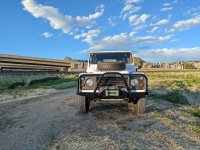It’s a wrap. Fluid time!

You are using an out of date browser. It may not display this or other websites correctly.
You should upgrade or use an alternative browser.
You should upgrade or use an alternative browser.
What have you done to your DEFENDER today?
- Thread starter javelinadave
- Start date
Mansfield heater time. Love a minty footwell!


Don’t leave us hanging! Did it start?
Heater box and coolant bleed. I don’t always love rivnuts, but it will make install so much easier!

Few more quickie tasks before I can start!Don’t leave us hanging! Did it start?
erover82
0
I was thinking about the issue of failing aluminum radiators tonight. I'm convinced it's due to corrosion fatigue
"Corrosion-fatigue is the result of the combined action of an alternating or cycling stresses and a corrosive environment. The fatigue process is thought to cause rupture of the protective passive film, upon which corrosion is accelerated."
In these radiators you have multiple compounding issues going on:
Welded aluminum - They tend to crack at the welds, where due the heat of welding the alloy has been effectively annealed. Aluminum already has relatively low fatigue strength, and this annealing reduces it about 30% more, making these sections much more susceptible.
Corrosive environment - These vehicles generally run older coolant formulations which only last a few years before turning acidic, and most people don't change coolant often enough, so the likelihood of a corrosive environment is high.
Cycling stresses - The radiator is only supported in a few points, exists in a high vibration application, and encounters frequent cyclic stresses due to heat and cooling system pressure fluctuations.
I think the somewhat counterintuitive reason the plastic tank / stamped aluminum tank radiators may be more reliable is that there are no welds, and in the case of a plastic tank, the tank portion is immune to corrosion. For brass radiators, it depends on the alloy, but there is potential for a higher fatigue strength, and the brazing process doesn't anneal the alloy.
I'd be very interested to know if you two tested your coolant with a ph strip, if you'd find that it's turned acidic.
Do you know if they use thicker materials? This would help negate the fatigue strength issue, or at least push it further down the road. What does their electrolysis diagnosis process look like? One thing I see recommended around the web that I will not do under any circumstance, is add a grounding strap to a radiator or heater core.
"Corrosion-fatigue is the result of the combined action of an alternating or cycling stresses and a corrosive environment. The fatigue process is thought to cause rupture of the protective passive film, upon which corrosion is accelerated."
In these radiators you have multiple compounding issues going on:
Welded aluminum - They tend to crack at the welds, where due the heat of welding the alloy has been effectively annealed. Aluminum already has relatively low fatigue strength, and this annealing reduces it about 30% more, making these sections much more susceptible.
Corrosive environment - These vehicles generally run older coolant formulations which only last a few years before turning acidic, and most people don't change coolant often enough, so the likelihood of a corrosive environment is high.
Cycling stresses - The radiator is only supported in a few points, exists in a high vibration application, and encounters frequent cyclic stresses due to heat and cooling system pressure fluctuations.
I think the somewhat counterintuitive reason the plastic tank / stamped aluminum tank radiators may be more reliable is that there are no welds, and in the case of a plastic tank, the tank portion is immune to corrosion. For brass radiators, it depends on the alloy, but there is potential for a higher fatigue strength, and the brazing process doesn't anneal the alloy.
My Allisport developed a leak at the same location as yours in the photo. I took it to a local shop and they were able to weld it up and it seems fine now, but I was pretty frustrated to have to deal with this issue in a ~2 year old radiator. The shop said it was likely due to electrolysis corrosion but I have no idea how valid this theory is.
Had an interesting conversation with a buddy whose lived and breathed LR since he was a kid and picked up wrenches to help his Dad. Now works at a shop.
His take, coolant gets acidic after 18-24 months. Replacing it frequently is necessary.
I'd be very interested to know if you two tested your coolant with a ph strip, if you'd find that it's turned acidic.
I’m going to have Ron Davis build me one at some point. I’ve installed at least a dozen of them in LS and RV8 builds without any issues.
Do you know if they use thicker materials? This would help negate the fatigue strength issue, or at least push it further down the road. What does their electrolysis diagnosis process look like? One thing I see recommended around the web that I will not do under any circumstance, is add a grounding strap to a radiator or heater core.
Last edited:
I don’t know what thickness they are, and I’ve only been installing them for about 3 years, so I wouldn’t expect to be seeing failures that quickly anyway.I was thinking about the issue of failing aluminum radiators tonight. I'm convinced it's due to corrosion fatigue
"Corrosion-fatigue is the result of the combined action of an alternating or cycling stresses and a corrosive environment. The fatigue process is thought to cause rupture of the protective passive film, upon which corrosion is accelerated."
In these radiators you have multiple compounding issues going on:
Welded aluminum - They tend to crack at the welds, where due the heat of welding the alloy has been effectively annealed. Aluminum already has relatively low fatigue strength, and this annealing reduces it about 30% more, making these sections much more susceptible to fatigue failure.
Corrosive environment - These vehicles generally run older coolant formulations which only last a few years before turning acidic, and most people don't change coolant often enough, so the likelihood of a corrosive environment is high.
Cycling stresses - The radiator is only supported in a few points, exists in a high vibration application, and encounters frequent cyclic stresses due to heat and cooling system pressure fluctuations.
I think the somewhat counterintuitive reason the plastic tank / stamped aluminum tank radiators may be more reliable is that there are no welds, and in the case of a plastic tank, he tank area obviously doesn't corrode. In the case if a brass radiator, it depends on the alloy, but there is potential for a high fatigue strength, and the brazing process doesn't anneal the alloy.
I'd be very interested to know if you two tested your coolant with a ph strip, if you'd find that it's turned acidic.
Do you know if they use thicker materials? This would help negate the fatigue strength issue, or at least push it further down the road. What does their electrolysis diagnosis process look like? One thing I see recommended around the web that I will not do under any circumstance, is add a grounding strap to a radiator or heater core.
They give you a whole sheet on how to check for electrolysis using a volt meter.
Added spacers to my trailing arms to adjust the geometry a bit better. Less vibration on deceleration now. Definitely better.
Now I just need to replace the u joints for the Wolf heavy duty ones my Tith truck uses and should be golden for summer. I have to say, the 1.4:1 Xcase IS way better overal than the 1.6 unit that the truck came with. Averaging 25+ mpg and still driving it ten to fifteen mph faster on average. 🫶🏽
Now I just need to replace the u joints for the Wolf heavy duty ones my Tith truck uses and should be golden for summer. I have to say, the 1.4:1 Xcase IS way better overal than the 1.6 unit that the truck came with. Averaging 25+ mpg and still driving it ten to fifteen mph faster on average. 🫶🏽
Last edited:
emj
0
I did not test my coolant, this was (is) all new to me, I was just really surprised when it started leaking as I had no idea that this was something to even worry about.I was thinking about the issue of failing aluminum radiators tonight. I'm convinced it's due to corrosion fatigue
"Corrosion-fatigue is the result of the combined action of an alternating or cycling stresses and a corrosive environment. The fatigue process is thought to cause rupture of the protective passive film, upon which corrosion is accelerated."
In these radiators you have multiple compounding issues going on:
Welded aluminum - They tend to crack at the welds, where due the heat of welding the alloy has been effectively annealed. Aluminum already has relatively low fatigue strength, and this annealing reduces it about 30% more, making these sections much more susceptible.
Corrosive environment - These vehicles generally run older coolant formulations which only last a few years before turning acidic, and most people don't change coolant often enough, so the likelihood of a corrosive environment is high.
Cycling stresses - The radiator is only supported in a few points, exists in a high vibration application, and encounters frequent cyclic stresses due to heat and cooling system pressure fluctuations.
I think the somewhat counterintuitive reason the plastic tank / stamped aluminum tank radiators may be more reliable is that there are no welds, and in the case of a plastic tank, the tank portion is immune to corrosion. For brass radiators, it depends on the alloy, but there is potential for a higher fatigue strength, and the brazing process doesn't anneal the alloy.
I'd be very interested to know if you two tested your coolant with a ph strip, if you'd find that it's turned acidic.
Do you know if they use thicker materials? This would help negate the fatigue strength issue, or at least push it further down the road. What does their electrolysis diagnosis process look like? One thing I see recommended around the web that I will not do under any circumstance, is add a grounding strap to a radiator or heater core.
MountainD
Technical Excellence Contributor
In the case of my Allisport radiator, which was just months old, it wasn't coolant, it wasn't electrolysis, and had very few cyclical fatigue uses. It was poor construction using super thin material and I am far from alone in this respect. I had new coolant, I check for electrolysis, and have on both my Ron Davis and the Allisport. Now, the Ron Davis is now 6 years old and never had so much as a leak. The Allisport didn't last 6 months. Sarek, that made my new stacked plate core reusing the Allisport end tanks (due to the form fit of their intercooler), showed me first hand how thin the tubes were, where it leaked and everything. And where it leaked isn't really welded as you don't weld the tubes--you basically float an aluminum solder similar to how you do the brass cores. There are plenty of youtubes on that. My frankenradiator has been performing well, and time will tell. But my Ron Davis has lived up to all expectations. I believe in that company.
Makes you wonder if it’s also the quality of the aluminum being offered and also the rods.In the case of my Allisport radiator, which was just months old, it wasn't coolant, it wasn't electrolysis, and had very few cyclical fatigue uses. It was poor construction using super thin material and I am far from alone in this respect. I had new coolant, I check for electrolysis, and have on both my Ron Davis and the Allisport. Now, the Ron Davis is now 6 years old and never had so much as a leak. The Allisport didn't last 6 months. Sarek, that made my new stacked plate core reusing the Allisport end tanks (due to the form fit of their intercooler), showed me first hand how thin the tubes were, where it leaked and everything. And where it leaked isn't really welded as you don't weld the tubes--you basically float an aluminum solder similar to how you do the brass cores. There are plenty of youtubes on that. My frankenradiator has been performing well, and time will tell. But my Ron Davis has lived up to all expectations. I believe in that company.
TopDeadCenter
Member
Finally got around to starting on the mystery squeak coming from somewhere in the serpentine on my 97 110 300tdi. My diagnosis led me to the water pump as it'd quiet down significantly if I sprayed PB Blaster behind the pulley. Pulled the front end apart and started working the water pump bolts out when I noticed there was a fixture or mount blocking the water pump from removal. The alternator had some mystery meat fabricated bracket holding it on. Inspecting it closer I realized it wasn't even the correct model at all! After pulling it out completely and running the serial number on the back, in turns out it's for a 2.5 TDI... Audi... Can't believe I didn't notice this when I first purchased the vehicle.
As the alternator was set too far back (on a mount made of stacked nuts and a single large bolt), the serpentine belt had been pulling it forward, destroying the bearing. Squeak source found.
As the alternator was set too far back (on a mount made of stacked nuts and a single large bolt), the serpentine belt had been pulling it forward, destroying the bearing. Squeak source found.
That has me very worried, just got an Allisport radiator and intercooler setup in this week.In the case of my Allisport radiator, which was just months old, it wasn't coolant, it wasn't electrolysis, and had very few cyclical fatigue uses. It was poor construction...
Attachments
-
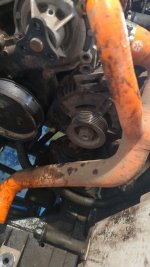 photo_2024-06-08_16-08-42.jpg127.4 KB · Views: 31
photo_2024-06-08_16-08-42.jpg127.4 KB · Views: 31 -
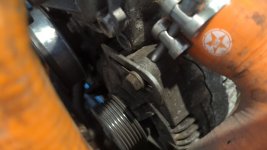 photo_2024-06-08_16-09-20.jpg88 KB · Views: 27
photo_2024-06-08_16-09-20.jpg88 KB · Views: 27 -
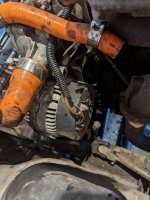 photo_2024-06-08_16-14-25.jpg194.1 KB · Views: 29
photo_2024-06-08_16-14-25.jpg194.1 KB · Views: 29 -
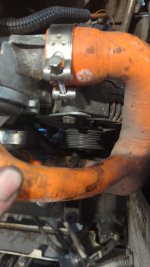 photo_2024-06-08_16-16-20.jpg106.6 KB · Views: 26
photo_2024-06-08_16-16-20.jpg106.6 KB · Views: 26 -
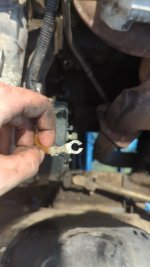 photo_2024-06-08_16-51-48.jpg96.7 KB · Views: 27
photo_2024-06-08_16-51-48.jpg96.7 KB · Views: 27 -
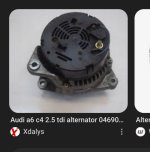 photo_2024-06-08_16-57-46.jpg73.1 KB · Views: 24
photo_2024-06-08_16-57-46.jpg73.1 KB · Views: 24
MountainD
Technical Excellence Contributor
at least my intercooler is still working...Finally got around to starting on the mystery squeak coming from somewhere in the serpentine on my 97 110 300tdi. My diagnosis led me to the water pump as it'd quiet down significantly if I sprayed PB Blaster behind the pulley. Pulled the front end apart and started working the water pump bolts out when I noticed there was a fixture or mount blocking the water pump from removal. The alternator had some mystery meat fabricated bracket holding it on. Inspecting it closer I realized it wasn't even the correct model at all! After pulling it out completely and running the serial number on the back, in turns out it's for a 2.5 TDI... Audi... Can't believe I didn't notice this when I first purchased the vehicle.
As the alternator was set too far back (on a mount made of stacked nuts and a single large bolt), the serpentine belt had been pulling it forward, destroying the bearing. Squeak source found.
That has me very worried, just got an Allisport radiator and intercooler setup in this week.
CTROVING
Active member
Updated the front suspension to handle the added weight of an ARB bump + winch - It's really nice working on a vehicle that has no rust.
9448 springs
Timing belt - DONE
Rear Tire Carrier - DONE
Relocating the control module for the winch - anybody have any suggestions on location?
Isolators for rear spring - NEXT




9448 springs
Timing belt - DONE
Rear Tire Carrier - DONE
Relocating the control module for the winch - anybody have any suggestions on location?
Isolators for rear spring - NEXT
TopDeadCenter
Member
Good to hear, been most excited about that so I can drop EGT. I70 is brutal on these 300tdis (I'm sure you know that!).at least my intercooler is still working...
Nice! I just finished a front end rebuild with Koni RAID shocks and new D110 HD coils. What a difference. Just accomplished a timing belt change too. I'm also looking at revising my winch setup, it's a bit awkward with the current clocking of the motor and I haven't even installed the control module yet.Updated the front suspension to handle the added weight of an ARB bump + winch - It's really nice working on a vehicle that has no rust.
9448 springs
Timing belt - DONE
Rear Tire Carrier - DONE
Relocating the control module for the winch - anybody have any suggestions on location?
Attachments
CTROVING
Active member
Although I haven't taken it for a drive just yet the front end is sitting up more appropriately even with the added weight of the bumper and winch, and I have a lot of confidence in the bilsteins.Nice! I just finished a front end rebuild with Koni RAID shocks and new D110 HD coils. What a difference. Just accomplished a timing belt change too. I'm also looking at revising my winch setup, it's a bit awkward with the current clocking of the motor and I haven't even installed the control module yet.
- Yes some winches need to be clocked to fit - considering putting my control unit under my seat (L) - There just doesn't seem to be adequate space under the hood for the winch control. What options have you come across?
I was pleasantly surprised with how well my loaded down 110 did going up I70 in March after replacing my injection pump which returned the fueling to stock. I had much more power and EGTs stayed around 1,100F. I was able to maintain about 55 mph in 5th gear and had to down shift on only two occasions. Before replacing my injection pump, I was doing like 25-30 mph and I kept having to back off the throttle because I was hitting 1350F+ constantlyGood to hear, been most excited about that so I can drop EGT. I70 is brutal on these 300tdis (I'm sure you know that!).

